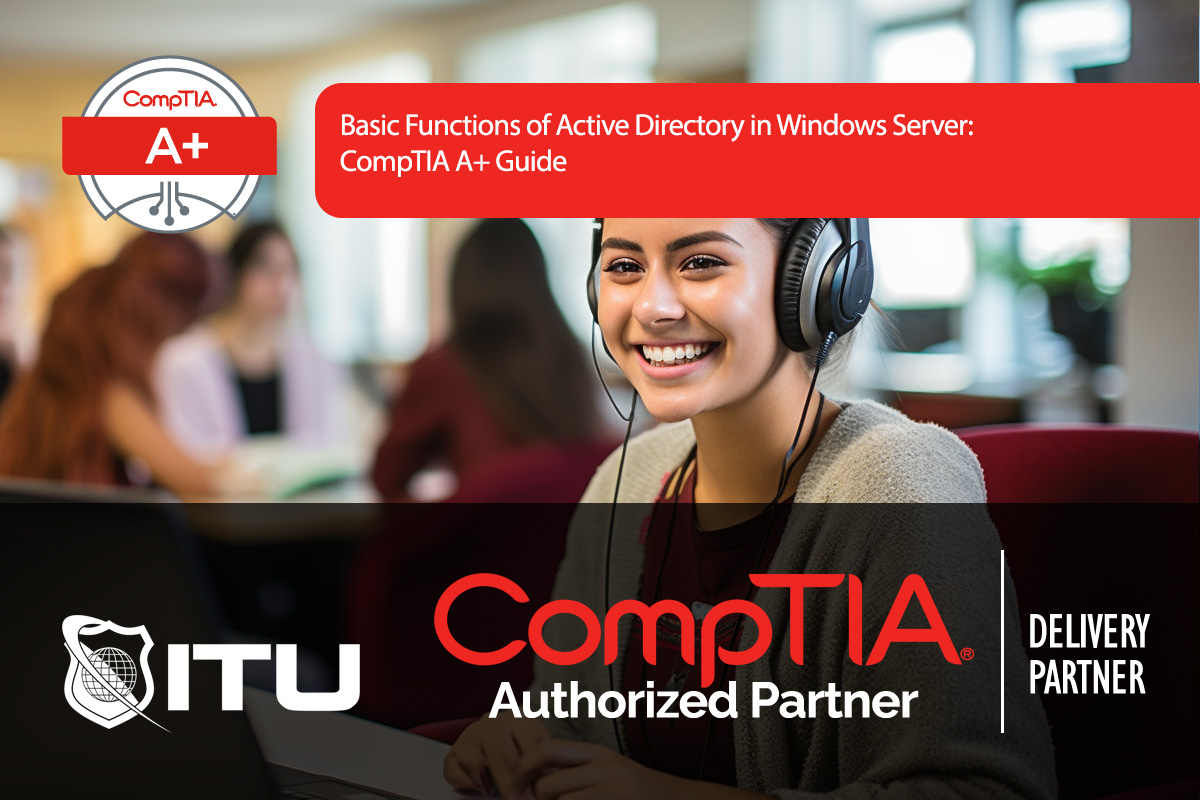Active Directory (AD) is a core part of Windows Server, especially for organizations requiring centralized control and management of resources, user accounts, and network policies. This guide explores essential Active Directory functions for Windows Server and offers insight into roles, single sign-on, roaming profiles, and more.
Configuring Active Directory Roles in Windows Server
After installing Windows Server (e.g., Windows Server 2021), you determine the server’s function within the network using the Server Manager Dashboard. Here, administrators can assign various roles to the server, such as Active Directory Domain Services (AD DS), DNS, and DHCP.
Windows Server Roles and Their Functions
- Domain Controller (AD DS): Manages user authentication, centralizes security, and stores the AD database for the domain. This is the heart of Active Directory.
- DNS Server: Translates domain names to IP addresses, enabling users to access resources on the network.
- DHCP Server: Dynamically assigns IP addresses to devices on the network, making IP management easier.
Combining Server Roles
In smaller environments with limited hardware, a single server may handle multiple roles (e.g., serving as a domain controller, DNS, and DHCP server). However, for larger organizations, it’s best to distribute these roles across multiple servers for security and performance, as placing all roles on one server creates a single point of failure and potential security risk.
Core Active Directory Components and Tools
When AD DS is installed, several key tools become available:
- Active Directory Users and Computers (ADUC): Manages users, groups, and computers. Here, administrators create and organize accounts.
- Active Directory Domains and Trusts: Manages relationships between multiple domains, including establishing trust relationships.
- Active Directory Sites and Services: Configures physical and logical network structure, supporting efficient resource access across various network locations.
Registering Computers and Users in Active Directory
In AD, each computer and user must be registered to the domain. Without a computer account, a device cannot access domain resources, even if the user has a valid account. This approach helps administrators maintain network security, ensuring only authorized devices can connect to the domain.
Group Policy and Scripts
Active Directory uses Group Policy Objects (GPOs) to manage security and desktop settings across user and computer accounts. Through GPOs, administrators can set:
- Security policies (e.g., password requirements)
- Desktop configurations
- Software installations and updates
Running Scripts with Group Policy
Scripts allow administrators to run multiple commands simultaneously, such as setting up mapped drives or configuring network paths:
- Logon Scripts: Execute commands each time a user logs into the domain, configuring the user environment.
- Group Policy Scripts: Can be deployed across OUs (Organizational Units), simplifying administrative tasks for specific departments or teams.
Single Sign-On (SSO) with Active Directory
Single Sign-On (SSO) enables users to authenticate once and access multiple network services. With AD, SSO is achieved through domain logins, allowing seamless access to email, file servers, and web applications. SSO reduces login fatigue, improves security, and is a crucial part of streamlined access management in networks using Active Directory.
Home Folders, Roaming Profiles, and Folder Redirection
In an AD environment, user data and settings can be redirected from local storage to the network, enabling greater flexibility for users and control for administrators.
Home Folders and Folder Redirection
- Home Folder: Typically stored under
C:\Users\[Username] on a local machine, the home folder can be redirected to a network share. This ensures user documents and personal settings are accessible from any network computer.
- Folder Redirection: Allows specific folders (like Documents and Desktop) to be stored on network shares rather than on local drives, improving data security and allowing administrators to manage user data centrally.
Roaming Profiles
With Roaming Profiles, user settings and files follow them as they log into different machines within the domain. For example, a user’s desktop background, mapped drives, and application settings are preserved, regardless of which computer they use. Roaming profiles are particularly useful in organizations where users may switch between workstations, such as in shift work or collaborative environments.
Benefits of Folder Redirection and Roaming Profiles
- Data Accessibility: Users can access their settings and data from any machine within the domain.
- Centralized Backup and Control: User data stored on network shares can be backed up by IT, ensuring data safety.
- Improved Security: Critical files and folders stay on the server, allowing administrators to enforce network security policies effectively.
Offline Files
Offline Files is a technology that caches network files to a local machine, enabling access when the network is unavailable. While useful in remote and mobile environments, many organizations now use VPNs instead, allowing users to connect securely to the network from anywhere without relying on offline files.
Summary: Essential Active Directory Functions in Windows Server for CompTIA A+ Certification
Active Directory on Windows Server offers centralized management, enhanced security, and operational efficiency for corporate networks. From managing roles and domain memberships to deploying GPOs, scripts, and roaming profiles, understanding these AD functions prepares CompTIA A+ candidates for real-world IT environments.
Frequently Asked Questions Related to Active Directory Functions in Windows Server for CompTIA A+ Certification
What roles can Windows Server handle in an Active Directory environment?
Windows Server can handle several roles in Active Directory, including Domain Controller (AD DS), DNS Server, and DHCP Server. These roles provide centralized authentication, name resolution, and IP address assignment across the network, respectively.
How does Group Policy use scripts in Active Directory?
Group Policy in Active Directory can deploy logon scripts that run commands automatically when a user logs in. These scripts can be used for tasks like mapping network drives, setting up printers, and configuring environment settings.
What is the purpose of Roaming Profiles in Active Directory?
Roaming Profiles allow user settings and files to be accessed from any computer within the domain. This enables users to have a consistent desktop experience across multiple machines, as their personalized settings and files follow them on the network.
What is Folder Redirection, and why is it used?
Folder Redirection is an Active Directory feature that redirects certain folders (like Documents and Desktop) to network locations. This enables centralized data storage and backup, ensuring user data is accessible from any domain-joined computer.
How does Single Sign-On (SSO) work in an Active Directory environment?
Single Sign-On (SSO) in Active Directory allows users to authenticate once with their domain credentials and gain access to multiple services and applications within the network. SSO simplifies access management and improves security by reducing repeated logins.










